|
Not too long ago the popular logic was that Tobacco companies could handle any lawsuit loss because they had the ability to raise prices at will. After all, what were Tobacco consumers going to do if a pack of cigarettes costs an extra 50 cents – quit smoking?
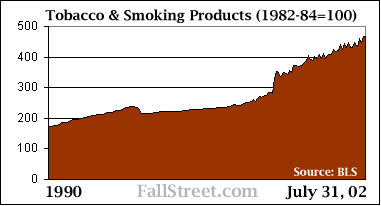 |
However, and after a decade of rising prices, there is mounting evidence to suggest that Tobacco companies are losing their ability to readily raise prices. To be sure, these days Philip Morris and RJR are not concerned about how much to raise prices by, but by how much they will have to raise their advertising budgets to keep sales of premium cigarettes primed.
Suffice it to say, the main reason why Tobacco companies are losing their ability to raise prices is because of government taxation. Quite frankly, what better way is there for a state to try and balance its budget than to increase taxes on almost a ¼ of the population (smokers) – and have this tax hike heralded by most non-smokers?
Cash Still King… For Now
For Tobacco investors it may be too early to panic. Yes, RJR and MO have suffered steep declines in free cash flows since 3Q01. However, using the quarterly data is not always reliable.
|
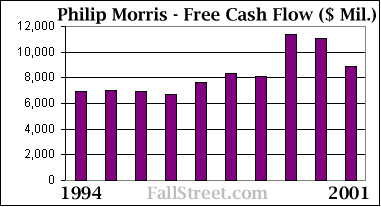 |
One company not impacted as deeply has been UST Inc. Whereas Philip Morris and RJR are looking at annual declines in free cash flow UST is set to meet last years totals.
|
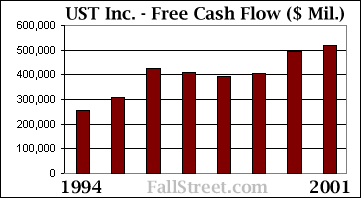 |
How ‘Free’ Is Free Cash Flow?
Companies that consistently generate free cash flow have the ability to use this money to increase shareholders dividends. However, and because there are numerous ways to account for free cash flow, it is not an absolute guide. For example, GE generated more than $80 billion in free cash since year-end 1992 (or beginning in 1993) until year-end 2001. However, since during this same period GE let its balance sheet strength slip (or its ‘working capital’), the free cash flow the company generated using a more in-depth formula was only $13.2 billion.
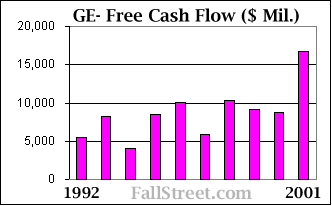 |
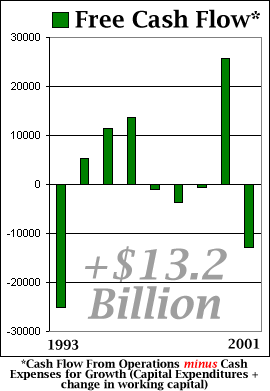 |
Conclusions
Tobacco companies will continue to generate solid revenues that are not necessarily determined by the prevailing economic environment. However, due to state tax increases and/or increased market competition the size of those revenues, and more importantly the size of margins and free cash flow, are coming into question.
Governments are in search of a price equilibrium – or the point where higher prices do not facilitate increased revenues because of the drop off in demand (and/or cheaper brands). That governments are desperately trying to figure out what this price equilibrium is rather than Tobacco companies is cause for concern.
Free cash flow is an important indicator to keep in mind when considering Tobacco stocks. Moreover, and as the GE example aptly demonstrates, watching a companies working capital can be equally important. If the pricing situation were to deteriorate until the point when Tobacco companies are funding dividends by lowering their working capital this would be further cause for concern.
Disclosure: UST Inc. is currently selected in the Wish List. Brady Willett & Todd Alway have a stake in all Wish List companies.
|
|
All data and information within these pages is thought to be taken from reliable sources but there is no guarantee as such. All opinions expressed on this site are opinions and should not be regarded as investment advice.
Copyright © 2000, 2001, 2002
FallStreet.com